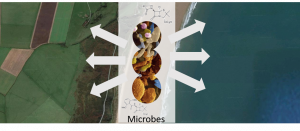
Microbial community interactions between land and water
This project aims to assess how microbial biodiversity is impacted by sea, freshwater and estuaries, pollution, and other environmental factors. In the Bork lab at EMBL, for example, one of the focuses is on the gene flux between land and water. More specifically, soil is a major reservoir of antimicrobial resistance (AMR) and this project will study local AMR profiles and mechanisms of AMR spreading from soils to waters and humans.
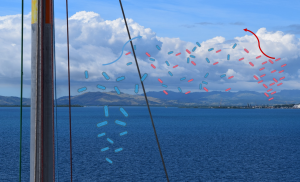
Bioaerosols across the land-ocean interface
Bioaerosols remain one of the least studied microbiomes on Earth. Airborne microbes impact the health of humans, plants and animals, and drive key climatological processes. The TREC project enables the Sunagawa lab at ETH Zurich to team up with the Ocean-atmosphere interactions group, led by Michel Flores at the Weizmann Institute of Science, and explore the diversity, function and dispersal of airborne microbial communities at the land-ocean interface. (BIOcean5D)
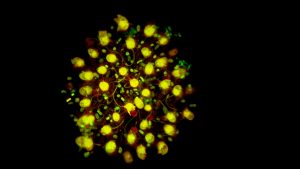
Discovering new culturable relatives of animals
The Brunet lab at the Institut Pasteur (Paris) studies choanoflagellates, the closest living relatives of animals. Many choanoflagellates can switch between unicellular and multicellular forms and thus offer a proxy to the origin of animal development. However, only a fraction of existing species are known. We will try to systematically describe and isolate new culturable choanos from plankton to understand the natural environment for the emergence of multicellularity.
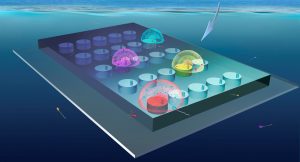
Characterising microbial behaviours at the continental scale
Microbial behavior will be quantified during TREC through the deployment of a novel sea-going microfluidic platform, the In Situ Chemotaxis Assay (ISCA). This international collaboration (Stocker: ETH Zurich, Raina + Seymour: University of Technology Sydney, Vincent: EMBL) will leverage the contextual data gathered during the expedition to identify environmental drivers influencing microbial behaviors.
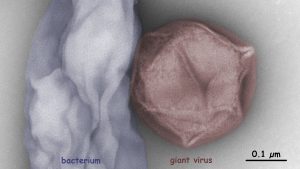
Morphological and genomic diversity of coastal giant viruses
Giant viruses influence the mortality, population structure and gene flux of various protists. The Fischer lab at the MPI for Medical Research studies the diversity and biogeography of giant viruses by electron microscopy, metagenomics, and cultivation on heterotrophic flagellates. We aim to compare coastal virus communities from water and soil and to isolate new giant viruses for a better understanding of their ecology.
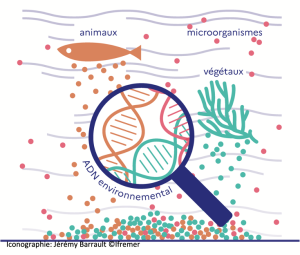
Marine communities along human pressure gradients
As part of the TREC expedition, Dr Arnaud-Haond (Ifremer) coordinates a team of researchers (AZTI, Ifremer , CNRS) to characterize marine communities across the entire Tree of Life (i.e. prokaryotes, protists, metazoans…), using metabarcoding protocols based on environmental DNA. Sampling performed along shallow-coastal gradients, under diverse levels of human pressure, will allow mapping the biogeography depending on life history traits and assess the impact of human activities.
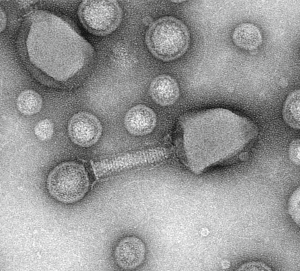
Diversity and ecology of Viruses and extracellular Vesicles (VV)
Viruses and Vesicles (VV) significantly shape plankton communities and marine biogeochemical cycles. Host-virus-vesicles interactions are poorly characterized although mediating key processes such as transfer of nucleic acids, antibiotic resistance, and cross-kingdom cell-cell communications. The Plankton Vesiclomics project (Chaffron, Baudoux et al., CNRS) will characterize the diversity and ecology of host-virus-vesicles interactions in coastal ecosystems by combining imaging, viral particles/vesicles quantification, sequencing, and computational analyses.
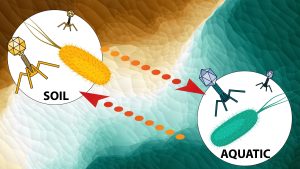
Diversity and biogeochemical impacts of viruses
The Sullivan Lab at the Ohio State University will examine, through virus-enriched metagenomics and linked microbiome datasets, the diversity and impact of viruses that infect soil and aquatic microbes. Virus abundance best predicts carbon fluxes in global oceans and impacts the evolutionary trajectories of their hosts. However, we lack data on such dynamics in coastal systems, which could be key in devising efficient climatic and ecological models for these areas.
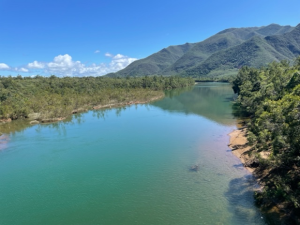
Coastal Microbiome Under River Run-Off Influence
Ifremer will analyse microbiome and environmental data from the shallow waters of the river outlet stations during the TREC expedition to identify biodiversity patterns of estuarine microbiomes and the factors structuring this diversity. Spatial data will be integrated to the ROME eDNA national observatory network to validate at temporal scale the potential differences found between estuaries of different basins – English Channel, Med. Sea, Atlantic Sea. (BIOcean5D)
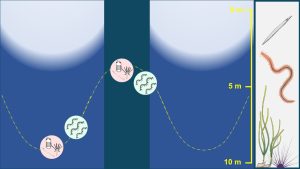
Rhythms@Sea: daily cycles in marine life
This project, lead by SZN (ITA) in collaboration with EMBL (GER) and other groups (in AUT, FRA and GER), aims at providing a multiscale analysis of plankton and benthos dynamics during the light-dark cycle in a coastal area of the Gulf of Naples. Meta-barcoding, meta-transcriptomes, morphological analysis and physiological measurements will be combined to describe diel rhythms at sea at the ecosystem level.
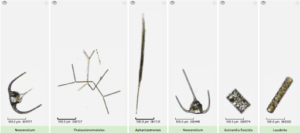
Microplankton quantification and characterisation across europeans seas using Flowcam
The Complex Team (LOV, Sorbonne University, Villefranche sur Mer- France) will analyze using the Flowcam the samples collected by 20µm nets. Results will allow us to quantify and qualify the microplankton across European seas and provide insight into the plankton ecology and trophic ecology in the various environments sampled.
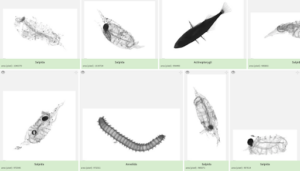
Macroplankton quantification and characterisation across europeans seas using Zooscan
The Complex Team (LOV, Sorbonne University, Villefranche sur Mer- France) will analyze using the Zooscan the samples collected by 680µm nets (Regent). Results will allow us to quantify and qualify the macroplankton across European seas and provide insight into the plankton ecology and trophic ecology in the various environments sampled.
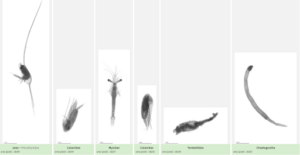
Mesoplankton quantification and characterisation across europeans seas using Zooscan
The Complex Team (LOV, Sorbonne University, Villefranche sur Mer- France) will analyze using the Zooscan the samples collected by 200µm nets (WP-2 nets). Results will allow us to quantify and qualify the mesoplankton across European seas and provide insight into the plankton ecology and trophic ecology in the various environments sampled.
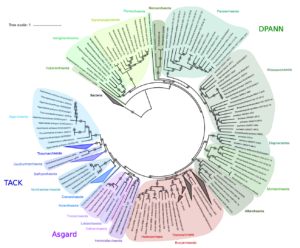
Coastal Archaea
Archaea represent the third domain of life; however, it is considerably understudied. Originally believed to only exist in extreme environments, they have since been shown to be ubiquitous in the environment. By using metagenomic techniques the Bork group at EMBL can explore the extent of archaeal diversity and their roles in the environment.
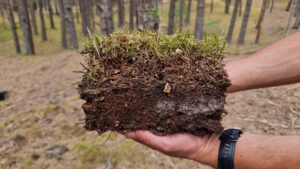
Rare biosphere in soil resiliency
Anthropogenic pollution can build up in the environment where they can permanently alter the habit. These pollutants can be removed from the environment through microbial processes but this can produce by-products that are as toxic as the original pollutant. The study by the Bork group at EMBL, will perform a large-scale analysis of European coastal soils in order to better understand the microbial community in these vulnerable areas.
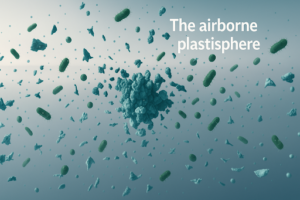
The airborne plastisphere
The Flores lab at the Weizmann Institute of Science will explore the airborne plastisphere—microbes hitchhiking on microplastics in the air—along 14,000 km of European coastline. By characterizing both the plastics and their microbial communities, we aim to understand their diversity, transport potential, and implications for ecosystem and human health.
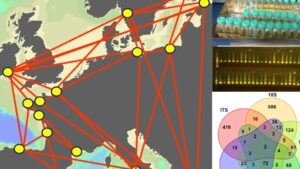
Connectivity of microalgae: dispersal and geographic profile
Genetic variability within species forms a basis for responding to environmental selection and provides information on the connectivity among geographically separated populations. The Phytoplankton group at TalTech, led by Prof. Sildever, will investigate the population genomic structure of cosmopolitan harmful algal bloom species using SNPs to understand their capability to spread in European coastal waters.
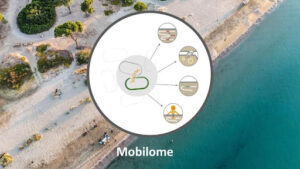
European Coastline Mobilome
Mobilome is an overarching term describing mobile genetic elements of different nature (phages, plasmids, integrons, transposons) residing in the microbiome. The Bork group at EMBL developed a computational pipeline to discover microbial genes that have potential to be mobilized and horizontally transferred in microbial communities. In a changing world marked by rising temperatures, pollution, and human impact on land and sea, the composition and function of mobilised genes play a critical role in enabling adaptive responses. TREC expedition gathered crucial data that enables unprecedented resolution in identification of environmental drivers of gene mobility that can help to identify key factors contributing or restricting spread of microbial adaptation traits e.g. resistance to antibiotics or pollutants degradation.
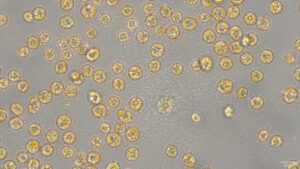
Tracing eukaryotic cell lysis with extracellular rRNA
Measuring the taxon-specific lytic mortality is a crucial challenge to understanding the biogeochemical cycles. The Ogata lab at Kyoto University will investigate the extracellular rRNA of microeukaryotes to address their cell lysis in the environments. We aim to reveal the organisms that are actively lysed and their relationship with environmental conditions.
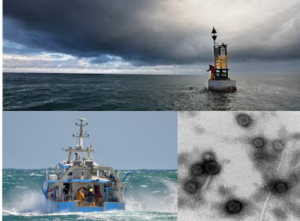
VIROBS: Towards a viral observatory in the Western English Channel
VIROBS investigates the temporal dynamics of marine viruses in the Western English Channel. Combining molecular and biogeochemical approaches, the lab of Dr Baudoux (CNRS) aims to monitor viral abundance, diversity, and activity to better understand virus-host interactions and their impact on carbon and nutrient cycling under environmental pressures.
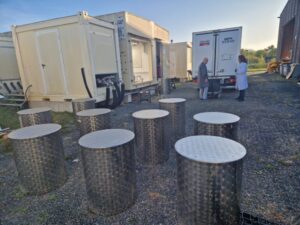
Effects of Xenobiotic Pollutants On Coastal microbial Ecosystem Resiliency (EXPOCER)
The project led by the Bork and Zimmermann groups, unites the molecular biology expertise of EMBL with the high-tech mesocosm facilities and knowledge of Ecotron Ile de France to tackle questions on the microbial changes and adaptation in global warming and human-induced pollution. The derived results will generate new knowledge about how coastal ecosystems respond to anthropogenic pressures such as climate change and xenobiotic pollution.
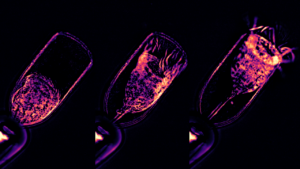
Excitability and complex behaviour in protists
Protists have surprisingly cognitive behaviours, such as mating, feeding, and prey capture. The Wan lab at the Living Systems Institute (University of Exeter) will chart the motility of diverse marine protists and their responses to sensory stimuli. The aim is to correlate motor outputs and excitable behaviours with cellular structure, to discover how functional complexity may be embodied within the physical architecture of these organisms.





















